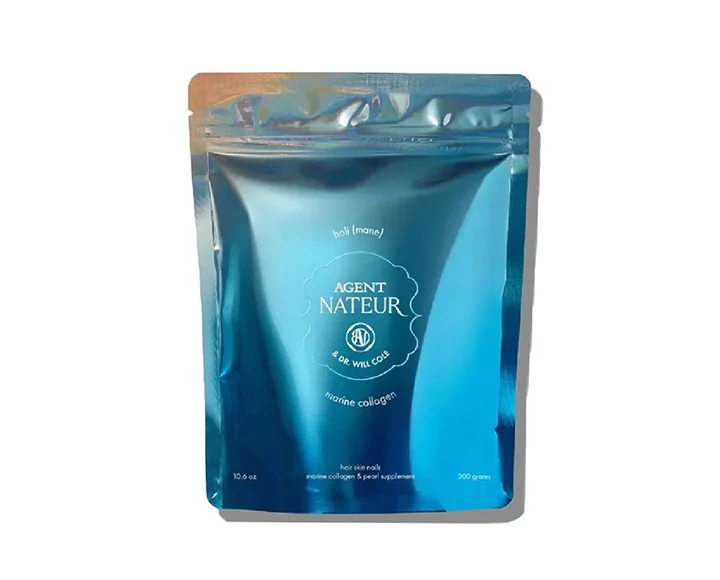Oh, Sweet relief. We’re exploring practical, unconfusing ways to beat sugar cravings once and for all with tips and insights from beloved functional medicine practitioner and former Guest Editor, Dr. Mark Hyman.
We’ve been told again and again that sugar is bad for our bodies, but its addictive nature (and nasty habit of sneaking into places it doesn’t belong) makes cutting it out of our diets difficult. With the video above and the info below, Dr. H is showing us exactly how to kick sugar to the curb and set ourselves up for healthier eating (we love how it looks in his daily diet) and sustainable success.
From ways to detox from our current sugar cravings, to what we should pack in a healthy snack bag to veer away from “see food dieting” (watch the video for details!), we’re diving into the heart of the problem and reclaiming control over our health…
Why We Need to Nix Sugar
Here’s the not-so-sweet truth: We are killings ourselves by consuming truckloads of hidden sugar. The facts are in, the science is beyond question. Sugar in all its forms is the root cause of our obesity epidemic and most of the chronic disease sucking the life out of our citizens and our economy — and, increasingly, the rest of the world. You name it, it’s caused by sugar: heart disease, cancer, dementia, type 2 diabetes, depression and even acne, infertility and impotence.
The average American consumes about 152 pounds of sugar a year. That’s roughly 22 teaspoons every day for every person in America. And our kids consume about 34 teaspoons every day — that’s more than two 20-ounce sodas — making nearly one in four teenagers pre-diabetic or diabetic. Flour is even worse than sugar. We consume about 146 pounds of flour a year. Think about it. That’s about one pound of sugar and flour combined, every day, for every man, woman and child in America. And flour raises blood sugar even more than table sugar. Even whole-wheat flour.
Here’s another shocking fact: Sugar is eight times as addictive as cocaine. So, needless to say, we need a clear path to detox from sugar, to break the addictive cycle of carb and sugar cravings that robs us of our health. The one-trillion-dollar industrial-food system is the biggest sugar dealer around, responsible for contributing to tens of millions of deaths every year and siphoning trillions of dollars from our global economy through the loss of human and natural capital. That’s why it’s up to us to take back our kitchens and take back our health by kicking sugar to the curb!
5 Ways to Detox from Sugar
Be a cold turkey. Stop all forms of sugar, all flour products and all artificial sweeteners — which cause increased cravings and slow metabolism, and lead to fat storage. Ideally, you want to avoid any foods that come in box, package or a can or that have a label, and stick to real, whole, fresh food. If you’re serious about getting off of sugar, consider a detox. I’ve seen thousands of people break the vicious sugar cycle.
Don’t drink your calories. Any form of liquid-sugar calories is worse than solid food with sugar or flour. Think of it as mainlining sugar directly to your liver. It turns off a fat-storage machine in your liver, leading to dreaded belly fat. You don’t feel full, so you eat more all day and you crave more sugar and carbs. It’s also the single biggest source of sugar calories in our diet. That includes sodas, sports drinks, sweetened teas or coffees. One 20-ounce soda has 15 teaspoons of sugar; Gatorade contains 14 teaspoons of the stuff in one bottle. One can of soda a day increases a kid’s chance of being obese by 60 percent and a woman’s chance of type 2 diabetes by 80 percent. Stay away!
Power up the day with protein and fight sugar with fat. Protein, protein, protein at every meal — especially breakfast — is the key to balancing blood sugar and insulin and cutting cravings. Start the day with whole farm eggs or a protein shake. Use nuts, seeds, eggs, fish, chicken or grass-fed meat for protein at every meal. A serving size is four to six ounces, or the size of your palm. Also, fat is not a four-letter word; it doesn’t make you fat, sugar does. Fat makes you full, balances your blood sugar and is necessary for fueling your cells. Along with protein, have good fats at every meal and snack including nuts and seeds (which also contain protein), extra-virgin olive oil, coconut butter, avocados and omega-3 fats from fish.
Be ready for emergencies. You never want to be in a food emergency when your blood sugar is dropping and you find yourself in a food desert such as an airport, the office or in a maze of convenience stores, fast-food joints and vending machines. You need an Emergency Life Pak. I have one with me all the time, filled with protein, good fats and good snacks so I never have to make a bad choice. Here’s what’s in mine: packets of Artisana nut butters and coconut butter, almonds, walnuts, pumpkin seeds, salmon jerky or turkey jerky, a can of wild salmon or sardines and unsweetened wild blueberries.
Put out the fire (of inflammation). Studies show that inflammation triggers blood-sugar imbalances, insulin resistance, pre-diabetes and type 2 diabetes. The most common source of inflammatory foods — other than sugar, flour and trans fats — are hidden food sensitivities. The most common culprits are gluten and dairy. We often crave the foods we’re allergic to. Without them we feel lousy and want more. Quit gluten and dairy for ten days. Getting off them isn’t easy, but after just two to three days without them you’ll have renewed energy and relief from cravings.













